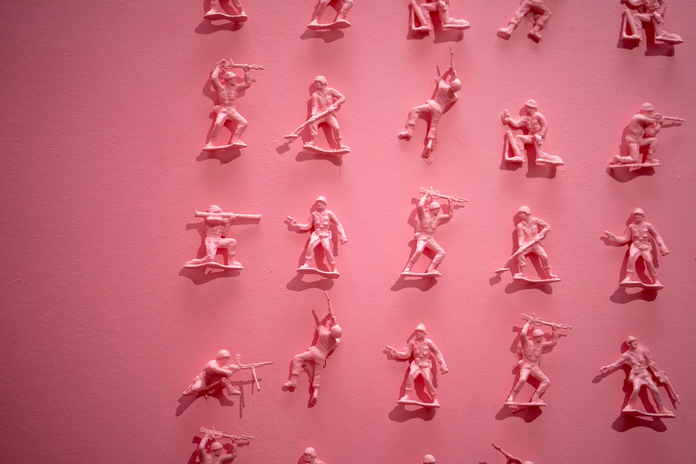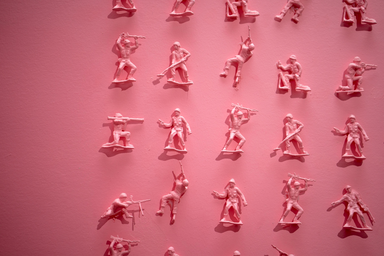What do Pepto Bismol, Barbie and Baskin Robbins have in common? Baker-Miller pink. Pink, in general, has always been associated with stereotypically feminine characteristics like calmness and beauty, but this specific shade has been scientifically proven to reduce aggressive behavior in people. The original study was conducted by two U.S. Naval Officers and showed a measurable and predictable effect of Baker-Miller pink on human behavior which led to a larger question of how a visual stimulus affects the way we think.
In 1979, Commander Miller and CWO Baker at the Naval Correctional Facility in Seattle mixed one pint of outdoor semi-gloss red trim paint and one gallon of pure white indoor latex paint. They proceeded to paint the walls and ceilings of the cells at the facility leaving only the floor untouched. They monitored rates of assault before the experiment began and during the 156 days that it continued. The final report confirmed the hypothesis and showed that inmates only required a maximum of 15 minutes to be influenced by the exposure to Baker-Miller pink. The study went on to explain that these effects were observed up to 30 minutes after inmates were removed from their cells.
This study was repeated again a few times, each time yielding different results, so in 1988, James Gilliam, Ph.D. and David Unruh, Ph.D. conducted their own research documenting concrete results for the effects of Baker-Miller pink. In this study, a group of 54 people was exposed to two different experimental environments, one being white and the other Baker-Miller pink. The subjects were split into two groups where the first was exposed to the white environment followed by the pink. Group two was exposed to the pink environment and then the white.
The purpose of this study was to observe and compare the effects of exposure to Baker-Miller pink and white on blood pressure, grip strength, pulse rate and performance on the Digit Symbol subtest of the Wechsler Adult Intelligence Scales – Revised (WAIS-R). The last category is essentially a detailed matching activity that measures cognitive function and response. This activity also analyzes anxiety, attention, and distractibility which was one of the reasons why Gilliam and Unruh included it in their research. Each participant was tested individually where they were seated in an empty classroom or office in front of either white or pink panels. The results of this study proved that Baker-Miller pink does, in fact, relieve anxiety and reduce tension in people who are exposed to it but it does not lower blood pressure or reduce strength.
One of the most interesting aspects of the studies on Baker-Miller pink, in my opinion, is the error of social desirability. The reason why many of the studies had such varying results is that men are socially steered away from the color pink starting from their childhood, so the context of the study is usually influenced by their predispositions. Nevertheless, the physiological evidence shows that we behave differently when we see Baker-Miller pink. The biological basis behind why this happens is still being studied but the next time you’re feeling blue, maybe take a glance at some pink.



